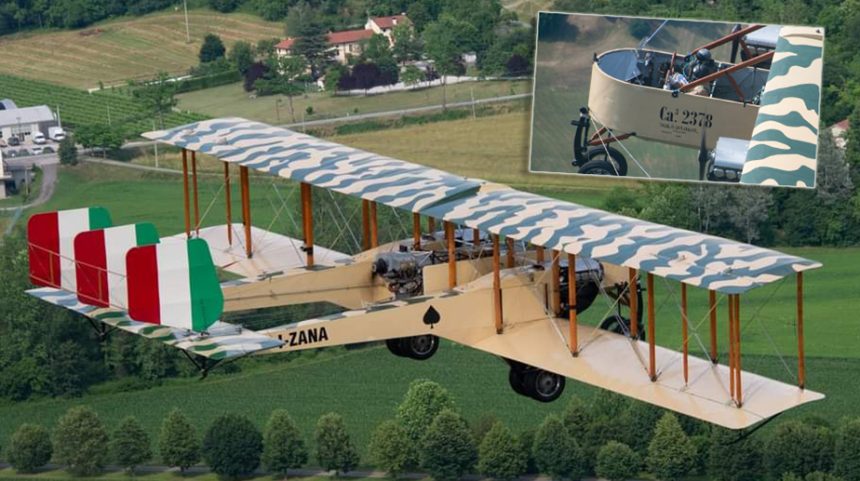The Caproni Ca.3 was the first strategic bomber in aviation history.
Piloted by our friends Daniele Beltrame and Fabio Consoli, the Caproni Ca.3 replica, registration I-ZANA, the only WWI bomber in flight conditions and the largest Italian amateur-built aircraft, took off from the grass runway at Nervesa della Battaglia airfield, in northeastern Italy, on Jun. 8, 2023.
Giancarlo Zanardo began building the three-engine bomber replica for the Jonathan Collection in 2008 based on the technical documentation provided by the Caproni family. Powered by three straight-six Ford 300 automotive engines, modified for aircraft use and fitted with reduction gears, the WWI bomber made series of short hops from the Campo di Nervesa runway to test the engines and related propellers before taking off for the first time on Mar. 3, 2015, piloted by Giancarlo Zanardo and Carlo Zorzoli. The first flight highlighted lack of power from the engines chosen for the replica.
Work on the aircraft was halted when, in October 2018, a massive flood hit the region causing significant damage to the Jonathan Collection’s hangars and aircraft. However, additional years of works and repairs managed to bring the Caproni Ca.3r back to an airworthy condition, so much so that the aircraft flew over 4 hours in 5 separate flights since Jun. 8, 2023.
The aircraft is going to be one of the highlights of the 100th Anniversary of the Italian Air Force airshow at Pratica di Mare Airbase, Jun. 16-18, 2023.
The Caproni Ca.3 was the first strategic bomber in aviation history.
Conceived in 1913 by Gianni Caproni (1886-1957) in response to the operational concepts of Giulio Douhet (1869-1930), the Ca.3 was one of the largest aircraft of his time. It was a tail beam biplane with central nacelle for the crew, propelled by three engines with a total power ranging from 260 HP (on the prototype) to 450 HP (on the latest production series). The prototype was flown on Nov. 20, 1914, by Emilio Pensuti. During the First World War it equipped many Italian squadrons. Gabriele D’Annunzio carried out numerous missions in crew with the pilots Maurizio Pagliano and Luigi Gori.
It was produced until 1925 in about 750 units, including 89 in France, and remained in service in Italy in the training role until about 1934.









